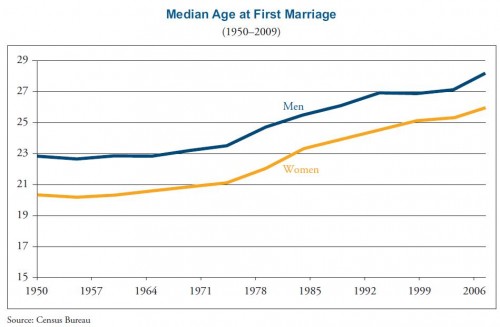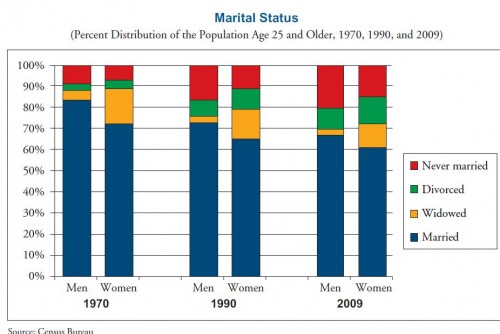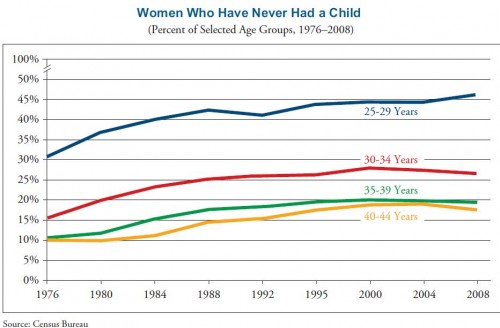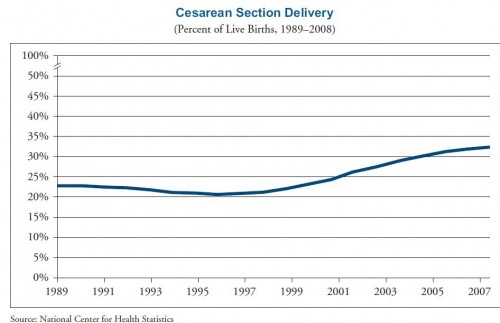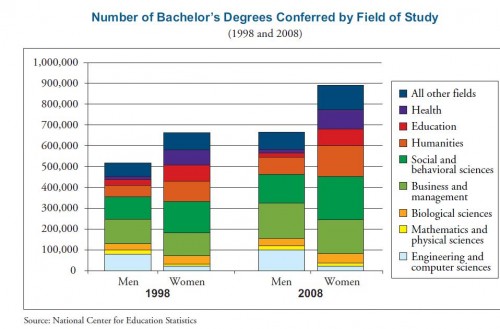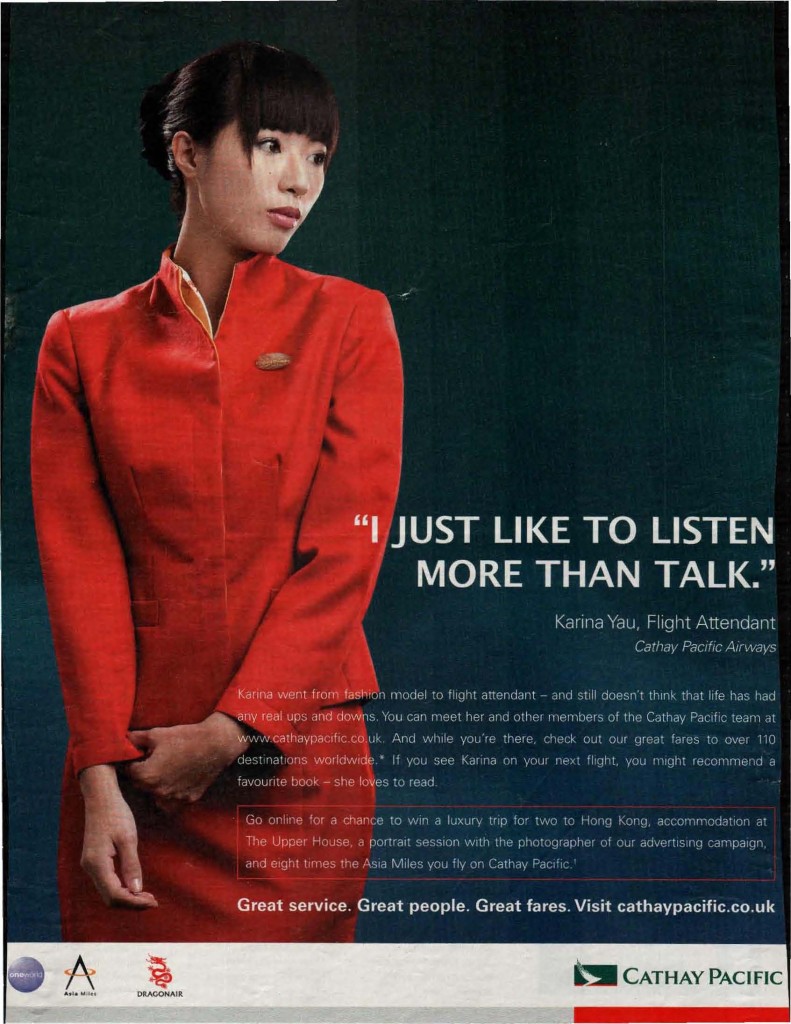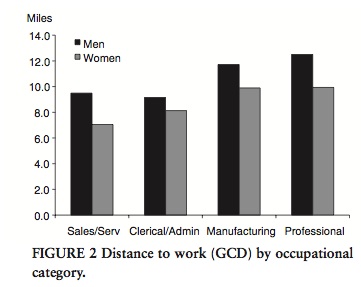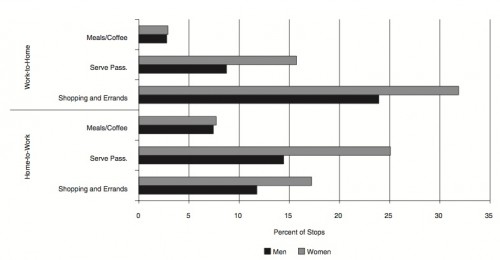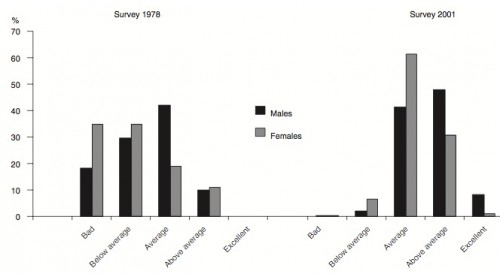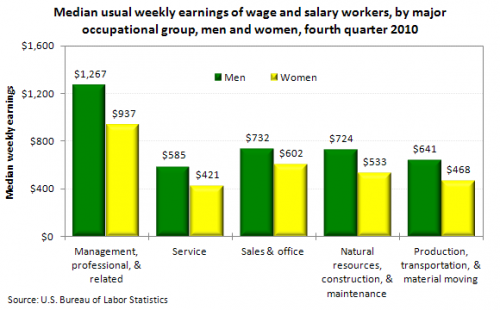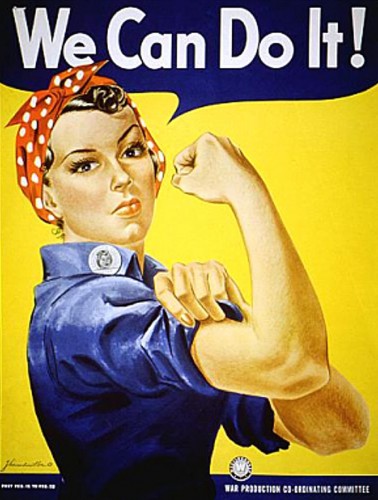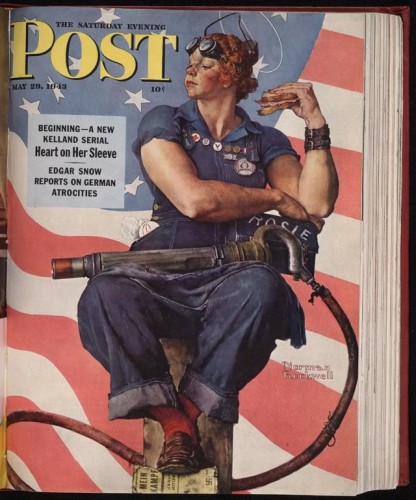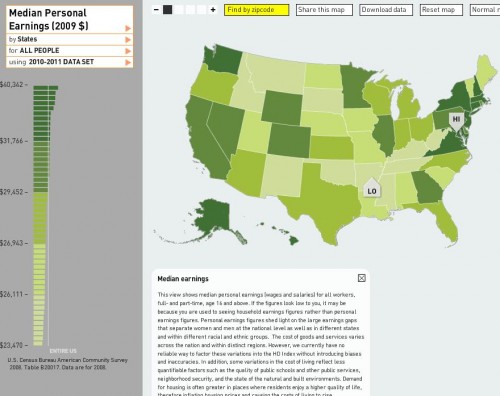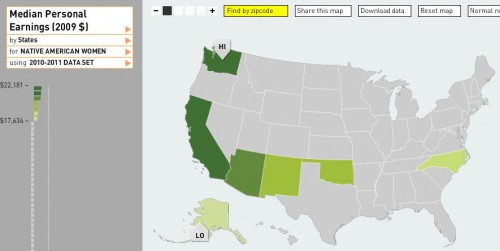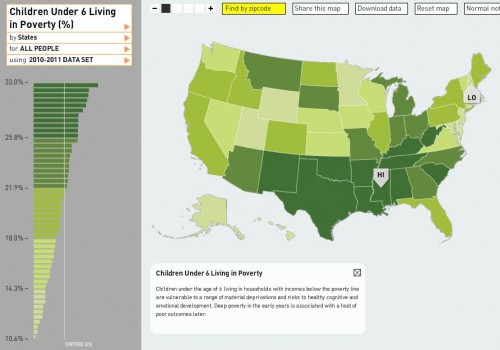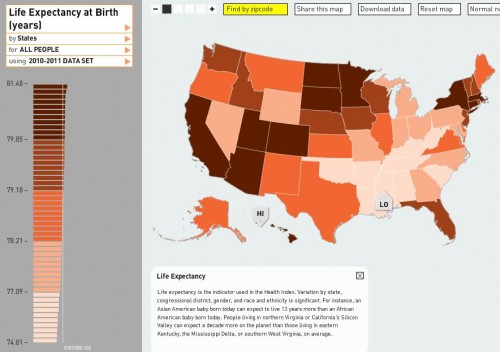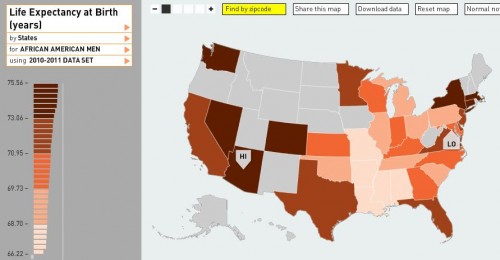Going on 500 of you “liked” our recent post summarizing the statistical case against Walmart for gender discrimination. A new Catalyst report, sent along by Washburn University Professor Sangyoub Park, reveals that Walmart isn’t alone in failing to promote women. The study of Fortune 500 companies found that the percent of board seats and corporate officer positions held by women have been increasing, but not particularly quickly (source):
As of 2010, 18% of senior officers and 6% of their top earners were women (source):
136 of the 500 companies had exactly zero female executives.
The data, however, actually varies quite tremendously by type of company (in a way that dovetails with general job segregation by sex):
Data from the Deloitte Global Center for Corporate Governance, covered by NPR, reveal how the United States compares to other similar countries. It shows that Europe is also struggling to achieve parity in the boardroom:
Lisa Wade, PhD is an Associate Professor at Tulane University. She is the author of American Hookup, a book about college sexual culture; a textbook about gender; and a forthcoming introductory text: Terrible Magnificent Sociology. You can follow her on Twitter and Instagram.








